Which 12 English constructions are unacademic?
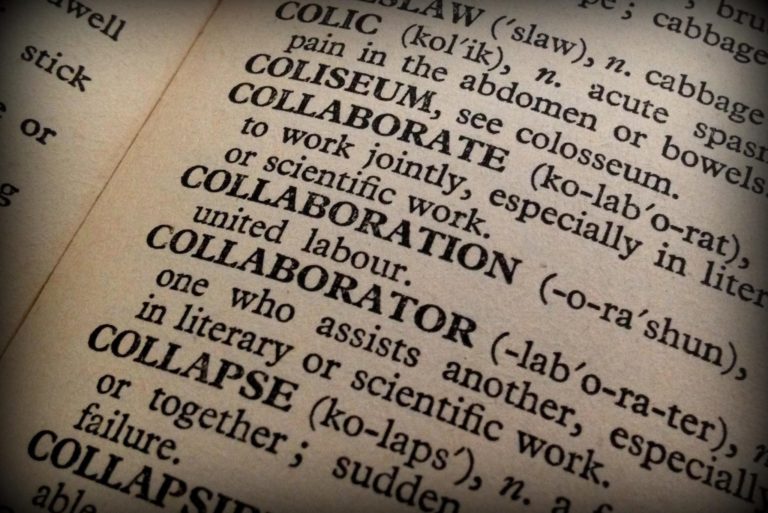
This is the third and final chapter about Academic Language. To complete this reader, read each chapter carefully and then unlock and complete our materials to check your understanding.
– Introduce twelve unacademic language structures
– Refer the reader to additional and relevant short courses
– Provide examples of each language structure to help guide the reader toward academic success
Before you begin reading...
-
video and audio texts
-
knowledge checks and quizzes
-
skills practices, tasks and assignments
Chapter 3
As was explained in some detail in Chapter 1, any native or non-native student, tutor or researcher that uses English as their primary language in academia will be required to learn the grammar, style, register and vocabulary that’s most appropriate when speaking or writing academically. To assist learners in doing this, Chapter 2 provided seven common structures that should be used in English for academic purposes (EAP), such as cohesive devices, hedging language and reporting verbs. This third and final chapter next aims to outline and exemplify the twelve most common language structures that should be avoided when attempting to mimic the correct academic style.
1. Contractions
While some abbreviations are certainly permitted in academic language such as acronyms (‘NATO’) and initialisms (‘CCTV’), contractions are one abbreviated form that should be avoided due to their perceived informality. Generally speaking, a contraction is a type of abbreviation in which two or more words have been combined into one shorter word, such as ‘can’ and ‘not’ becoming ‘can’t’:
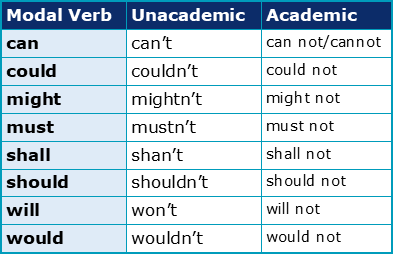

As is shown in the previous tables, contractions are most commonly found in the English language when negating modal verbs with apostrophes and when combining personal pronouns such as ‘I’ or ‘he’ with auxiliary verbs like ‘have’ or ‘be’. A student who wishes to maintain an academic style and register in their writing should therefore work to avoid these types of contracted constructions.
2. Direct Questions
Second on the list of unacademic constructions are direction questions, such as the following two examples:


As can be seen from the two reformulated indirect questions below, it’s straightforward enough for academics to rewrite these direct questions as indirect question-statements, making these sentences more formal and appropriate:
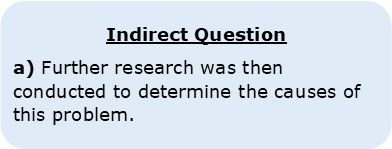
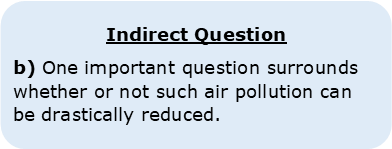
3. Emotive Words
Because academic language is intended to be formal, objective and scientific, students should refrain from using any language that is overly emotive – such as the adjectives ‘fantastic’ or ‘wonderful’. When considering the following two examples, we can see how emotive language such as ‘fantastic study’ or ‘terrifying nature’ provides too much of an authorial opinion on the subject without providing any real and verifiable evaluations or judgements (as descriptive vocabulary does):


4. Exclamations
An easy one to remember is that students should also avoid using exclamatory sentences and exclamation marks (!) within their writing, such as ‘How unfortunate!’ or ‘I was surprised by the results!’. Much like in the previous point (3), exclamative constructions such as these are considered to be too emotive, too informal, and generally lacking in scientific objectivity.
5. Generalisations
Generalisations are another type of construction that English for academic purposes students should strive to improve when editing and proofreading their work. As can be seen in the following examples, generalisations such as ‘women are smarter than men’ can be difficult to prove or provide conclusive evidence for, and are therefore considered to be unacademic. Instead, students should try to include examples and facts wherever possible, using hedging language in an attempt to make their claims more cautious:

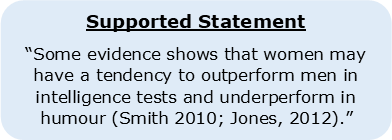
6. Hyperbole
Likewise, hyperbole (explicit exaggeration) should also be avoided if a student wishes to remain in the style and register appropriate for academic discourse. While it might be tempting to exaggerate a claim or situation to better convince your readers, doing so will only reduce the scientific objectivity of your writing and suggest that you rely on sensationalism rather than evidence to support your arguments. Instead, the use of academic sources, existing research, cited facts and case-study evidence will provide strength to your key ideas, as in the examples below:

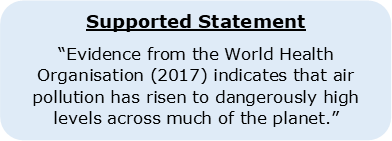
7. Idioms
Idioms are a type of expression in which the meaning of that expression cannot be easily known from the meaning of its individual words. Phrases such as ‘burning the midnight oil’ or ‘it’s raining cats and dogs’, for example, which respectively mean ‘staying up late to work’ and ‘raining heavily’, are idiomatic in nature and should not be used in academic writing. The reason for this is that such phrases may be colloquial (local) in nature, vague in meaning, or fail to provide the level of accuracy that other more precise expressions could offer.
8. Incorrect Conjunctions
While it’s especially important for academics to use coordinating and subordinating conjunctions such as ‘and’ and ‘while’ or conjunctive adverbs such as ‘however’ and ‘therefore’ to improve cohesion, it’s critical that these conjunctions are used accurately every time. Thankfully, there are three simple rules that can be followed in order to assure this:
i) avoid overusing conjunctions within an essay or repeating the same conjunctions
ii) make sure that you fully understand the meaning and grammar of the conjunctions you decide to use, and then try to use those conjunctions accurately
iii) avoid beginning a sentence with a coordinating conjunction, such as ‘And it was found that…’ or ‘But there was a problem…’, as this is not academic
9. Personal Pronouns
While it’s debatable whether or not personal pronouns such as ‘I’ or ‘he’ are acceptable in academic writing as a form of academic language (you may see them sometimes being used), the general advice is that they should be avoided. As can be seen in the examples below, the use of such pronouns has a tendency to make a piece of writing more subjective and informal, and therefore less academic
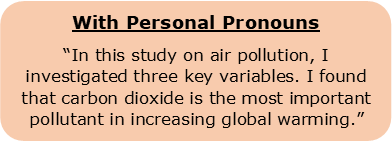

By using passive expressions such as ‘were investigated’ and ‘was found’ to remove agency (therefore removing the need for personal pronouns), the writer is able to improve the objectivity and formality of their statements and claims.
10. Phrasal Verbs
Much like the use of personal pronouns in academic writing, whether or not phrasal verbs may be employed by the writer in a piece of research is a somewhat controversial issue. Phrasal verbs are created when particles, prepositions or adverbs are combined with a verb to create a unique meaning, such as how ‘take off’ describes either (a) the removal of clothing, or (b) when an aeroplane leaves the ground. However, because of the idiomatic nature of these constructions (see point 7) and their frequency in informal spoken English, phrasal verbs such as ‘take off’ or ‘put up with’ should for the most part be avoided. Writers may instead prefer to use the single-word synonyms of these phrasal constructions, such as are provided in the tables below:
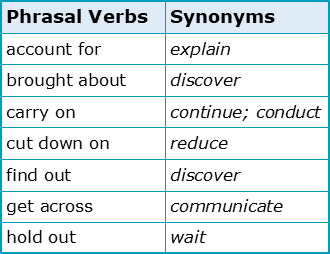

While these single word-synonyms may be the most recommended option, there are still a select number of phrasal verbs that are commonly used in academic writing. We’ve provided ten of the most common and frequently used academic phrasal verbs for your reference below:

11. Slang
Eleventh on our list of unacademic language is what’s known as ‘slang’ or ‘colloquialisms’, which are the type of extremely informal language that school children might use on the playground or that friends may use on the phone to each other. Because this language may be local in nature and may therefore not be widely known by global English speakers, and because such expressions are often extremely informal and idiomatic, students should avoid slang and colloquial expressions such as those provided in the following table at all costs:
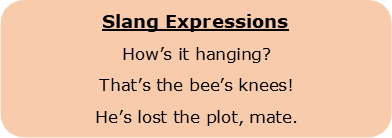
12. Vague Expressions
Finally, imprecise and vague words and expressions such as ‘some stuff’, ‘that thing’ or ‘those bits’ that fail to sufficiently explain concepts to the reader should also be avoided. When remembering that academic language should be clear, precise, formal and objective, we can see how vague expressions such as these should be replaced with more specific language during the editing and proofreading process.
Well done on completing our short reader on academic language. Consider next choosing another reader to study on academic vocabulary, and don’t forget to download our beginner, intermediate and advanced worksheets to check your progress and understanding.
To reference this reader:
Academic Marker (2022) Academic Language. Available at: https://academicmarker.com/academic-guidance/vocabulary/academic-language/ (Accessed: Date Month Year).
Downloadables
Once you’ve completed all three chapters about academic language, you might also wish to download our beginner, intermediate and advanced worksheets to test your progress or print for your students. These professional PDF worksheets can be easily accessed for only a few Academic Marks.c
Collect Academic Marks
-
100 Marks for joining
-
25 Marks for daily e-learning
-
100-200 for feedback/testimonials
-
100-500 for referring your colleages/friends